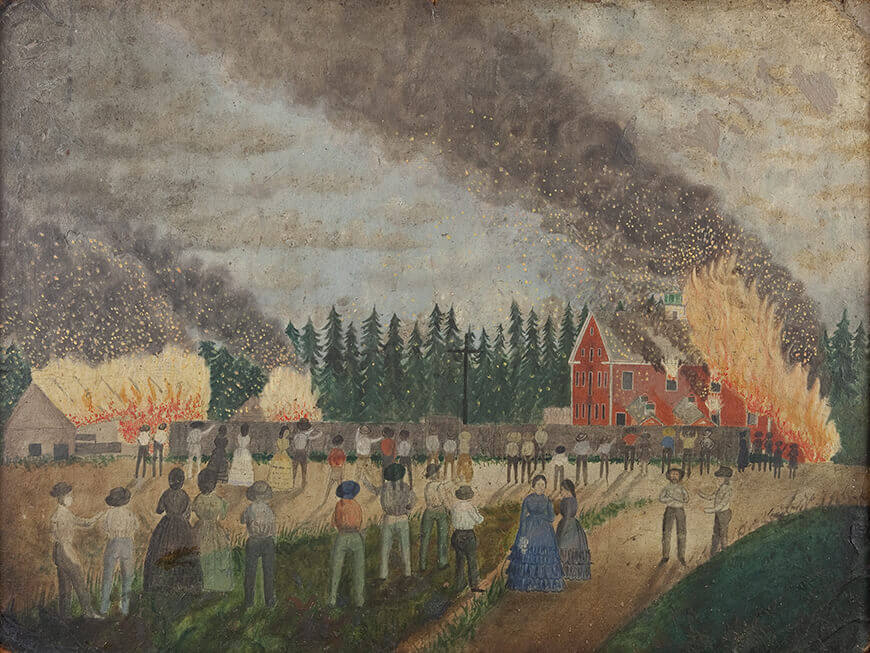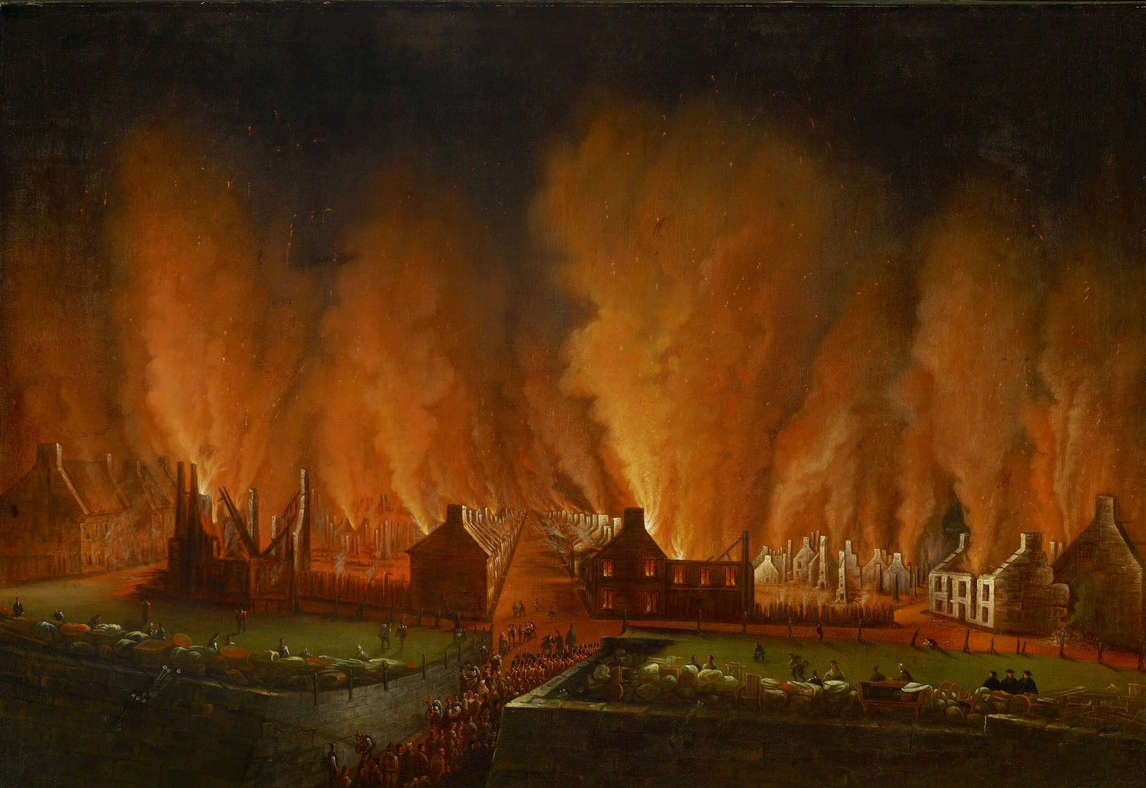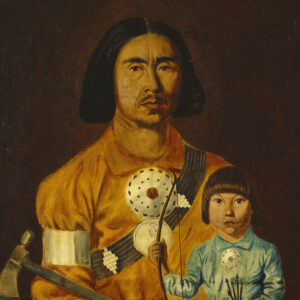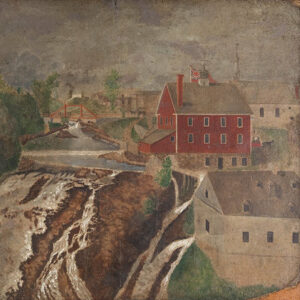Fire at the Paper Mill in Lorette c. 1862

Zacharie Vincent, Fire at the Paper Mill in Lorette, c. 1862
Oil on cardboard, 44.4 x 59.4 cm
Musée de la civilisation, Quebec City
Here Vincent depicts the fire that broke out on June 10, 1862, at the Smith paper mill on the Kabir Kouba River and spread to the church of Notre-Dame de la Jeune-Lorette. Thanks to the quick action of Abbé Prosper Vincent (the artist’s nephew, who was on holiday in the village) and several other citizens, most of the church furnishings and sacred objects were save. Zacharie Vincent immortalized the event in two oil paintings and a drawing, choosing to portray in all three works not the landscape in ruins but instead the height of the blaze.

Like Vincent’s works, three paintings by Joseph Légaré (1795–1855) bear witness to tragic events that shook the community: Cholera Plague, Quebec, c. 1832; The Fire in the Saint-Jean Quarter, Seen Looking Westward, 1848; and The Fire in the Saint-Roch Quarter, Seen from Côte-à-Coton Looking Westward, 1845. But Légaré creates dramatic effects with a generous use of red and chiaroscuro, emphasizing the panic and agitation of the crowd, whereas Vincent uses no exaggeration to create drama or emotion; at most, he lengthens the shadows in the light of the flames, as sparks and thick smoke waft upward. In the foreground, people stand in frieze-like groupings with their backs to the viewer and observe the scene in a calm and orderly way. Also in 1862 there was a fire in the Quebec City studio of Théophile Hamel (1817–1870), which destroyed the building and the artist’s work. These events suggest that when Vincent painted Fire at the Paper Mill in Lorette, he was not simply documenting a historical event but creating a composite image that represented the conditions of precariousness and irremediable loss.

 About the Author
About the Author
 More Online Art Books
More Online Art Books
 Acknowledgements
Acknowledgements